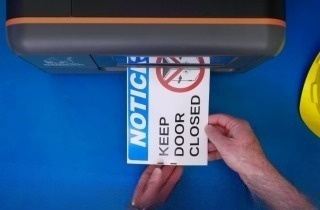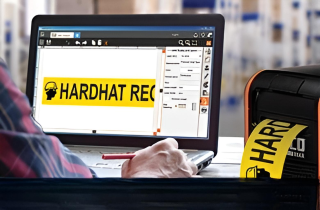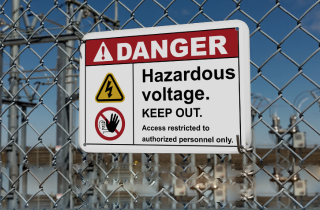Types of Floor Marking for Safety, Visibility, and Navigation

What Are the Types of Floor Marking?
Types of floor marking include colored tape, glow-in-the-dark strips, and anti-slip options that improve visibility and safety. These markings help maintain order, guide traffic, and prevent hazards in fast-paced environments, supporting workplace safety programs and visual organization goals like those in 5S systems.
Here's a look at the different types of floor marking tape and how they improve organization and increase efficiency in numerous common workplace environments, and how DuraLabel® PathFinder® Floor Marking Safety Tape and Floor Signs can help.
Floor Marking for Warehouse Environments
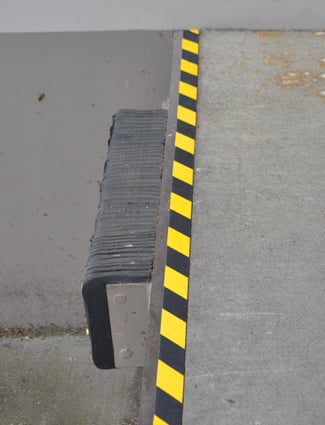 No matter how large or small your warehouse may be, odds are good it can benefit from effective floor marking. Here's a sampling of how floor marking can help:
No matter how large or small your warehouse may be, odds are good it can benefit from effective floor marking. Here's a sampling of how floor marking can help:
- Color-coded floor marking: Cordon off storage and inventory areas; create pathways and traffic routes; and create boundaries around work areas
- Reflective floor marking: Make hazards and other important objects (such as posts, shelves, and speed bumps) more visible
- Floor signs: Develop traffic controls for forklifts (and other powered industrial trucks) and advise workers of proper protocol
- Hazard stripe tape: Establish clearance areas around electrical panels, and point out loading docks and other exposed edges
OSHA outlines few requirements for floor marking; the agency's standard for walking and working surfaces (29 CFR 1910.22) states that, "The employer must provide, and ensure each employee uses, a safe means of access and egress to and from walking-working surfaces."
Beyond the standard, OSHA has issued several interpretations to help employers develop effective floor marking systems. Learn more about OSHA's floor marking requirements.
Floor Marking for Low-Light Situations
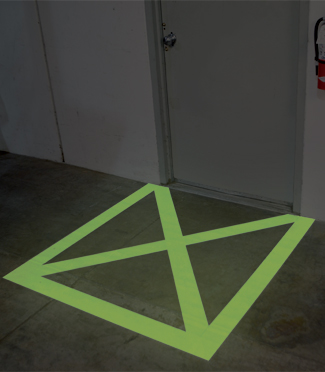 Power outages have become more common in recent years, as severe weather has impacted power grids throughout the United States; according to the Washington Post, weather-related outages cost $18-$33 billion each year.
Power outages have become more common in recent years, as severe weather has impacted power grids throughout the United States; according to the Washington Post, weather-related outages cost $18-$33 billion each year.
Prepare for power outages and other emergencies with phosphorescent visual communication. Floor markings and glow-in-the-dark signs made from photoluminescent material can:
- Outline emergency egress paths and direct workers to exits
- Call out emergency equipment, such as fire extinguishers and emergency phones
- Highlight stairs and ramps
- Identify building floors and exits
These types of luminous egress path markings are required in numerous local, national, and international building standards. Those include:
- International Building Code (IBC): The International Code Council's IBC provides guidance for how (and where) luminous exit markings must be used.
- National Fire Protection Association (NFPA): The NFPA's Life Safety Code, which covers building safety in the United States, includes requirements for when (and how) to use exit stair path markings.
Learn more about these standards (and other uses for glow-in-the-dark signage) with DuraLabel Photo Luminescent Safety Signage Guide.
Floor Marking for Marine Settings
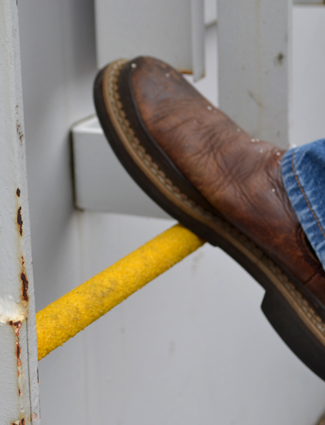 Docks, ships, oil rigs, and other marine settings are rife with hazards. Slips, trips, and falls are especially common when working in marine environments. Fortunately, floor marking can keep workers safe, upright, and on the job. Here's how various types of floor marking can help:
Docks, ships, oil rigs, and other marine settings are rife with hazards. Slips, trips, and falls are especially common when working in marine environments. Fortunately, floor marking can keep workers safe, upright, and on the job. Here's how various types of floor marking can help:
- Tread tape (non-abrasive): Improve your grip on hand rails and desktop surfaces, and stay upright in areas where liquid spills regularly occur.
- Tread tape (abrasive): Avoid slips and falls with abrasive tape that offers a stronger, more durable grip on stairs, patterned floors, and other slippery surfaces.
- Safety of Life at Sea (SOLAS) tape: Reflective marking that meets U.S. Coast Guard standards can improve pathway visibility, make stairways and handrails easier to see, and call attention to personal floatation devices.
Floor Marking Resources from DuraLabel
DuraLabel offers two free resources to help employers get started with floor marking. Learn more about regulations and specific applications with our Best Practice Guide to Floor Marking, and get a quick look at common floor marking uses with our Floor Marking Color Chart.
Take Action Today
Want to learn how to apply types of floor marking in your facility? Learn more about PathFinder Floor Tape or call us today at 1-888-788-9936. One of our experts will help you integrate types of floor marking into your workflow using proven Lean strategies and DuraLabel® Industrial Sign and Label Systems.
Related Resources

Business Analysis Methods: Balanced Scorecard
The balanced scorecard is a business analysis method used to translate an organization's mission statement ...
Read
Boosting Workplace Efficiency With 5S During Labor Shortages
How Does 5S Support OSHA Standards in Lean Workplaces? 5S supports OSHA standards by organizing tools, ...
Read
A Quick Guide to Floor Marking Products
Why are Floor Marking Solutions Important? Floor marking solutions help safety managers and facility teams ...
Read.png)

